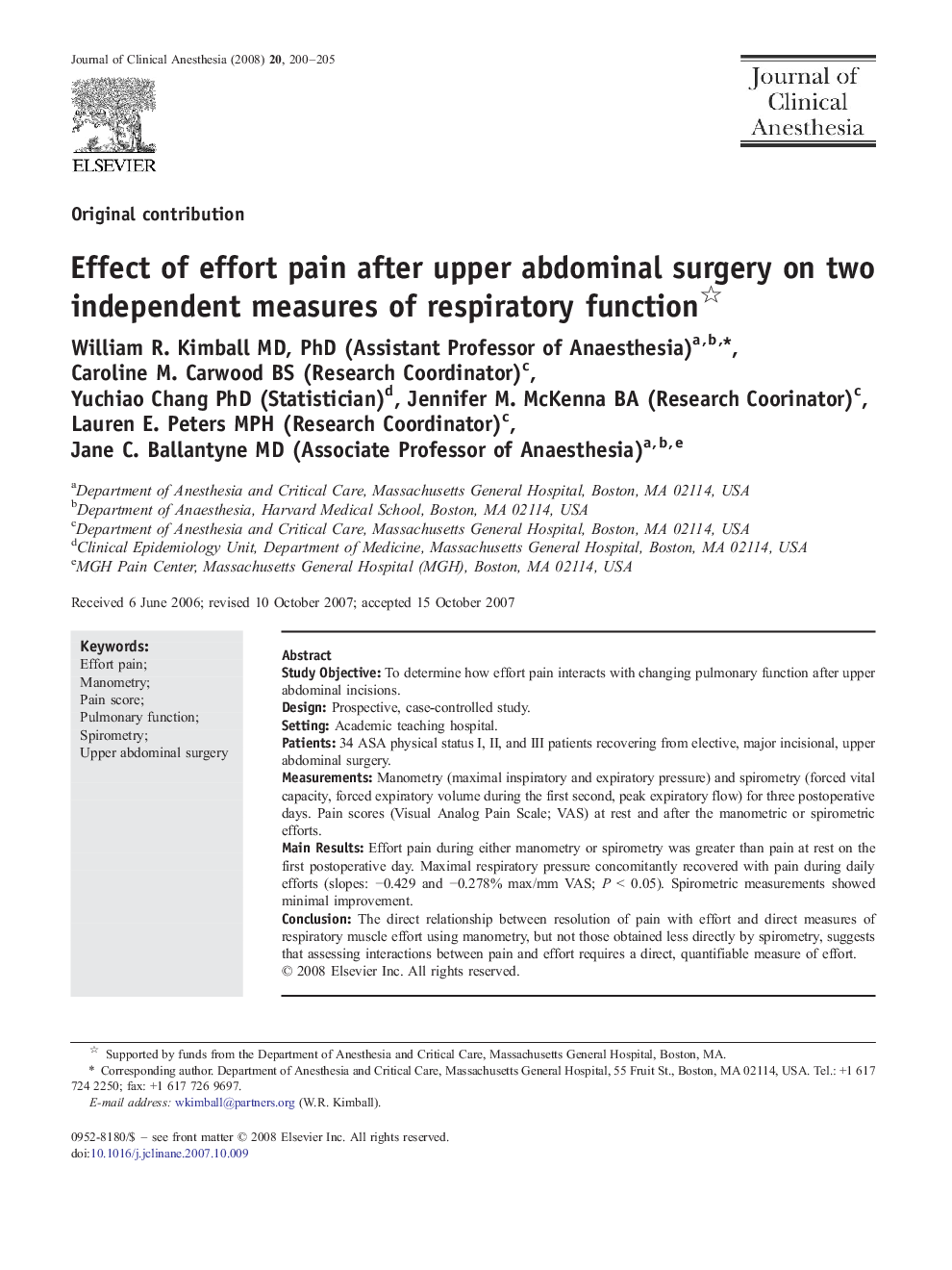| Article ID | Journal | Published Year | Pages | File Type |
|---|---|---|---|---|
| 2763582 | Journal of Clinical Anesthesia | 2008 | 6 Pages |
Study ObjectiveTo determine how effort pain interacts with changing pulmonary function after upper abdominal incisions.DesignProspective, case-controlled study.SettingAcademic teaching hospital.Patients34 ASA physical status I, II, and III patients recovering from elective, major incisional, upper abdominal surgery.MeasurementsManometry (maximal inspiratory and expiratory pressure) and spirometry (forced vital capacity, forced expiratory volume during the first second, peak expiratory flow) for three postoperative days. Pain scores (Visual Analog Pain Scale; VAS) at rest and after the manometric or spirometric efforts.Main ResultsEffort pain during either manometry or spirometry was greater than pain at rest on the first postoperative day. Maximal respiratory pressure concomitantly recovered with pain during daily efforts (slopes: −0.429 and −0.278% max/mm VAS; P < 0.05). Spirometric measurements showed minimal improvement.ConclusionThe direct relationship between resolution of pain with effort and direct measures of respiratory muscle effort using manometry, but not those obtained less directly by spirometry, suggests that assessing interactions between pain and effort requires a direct, quantifiable measure of effort.
